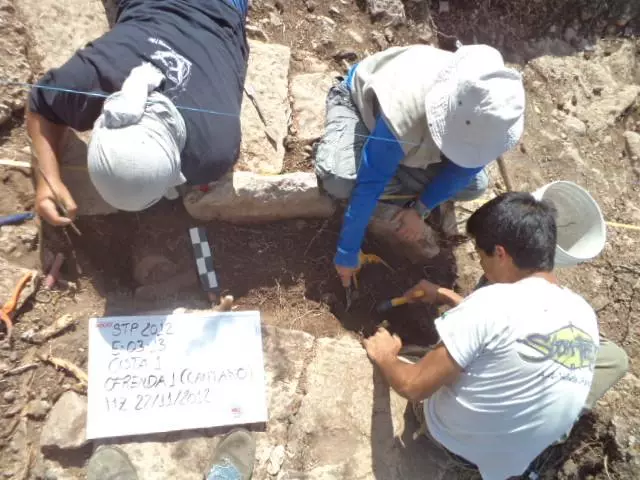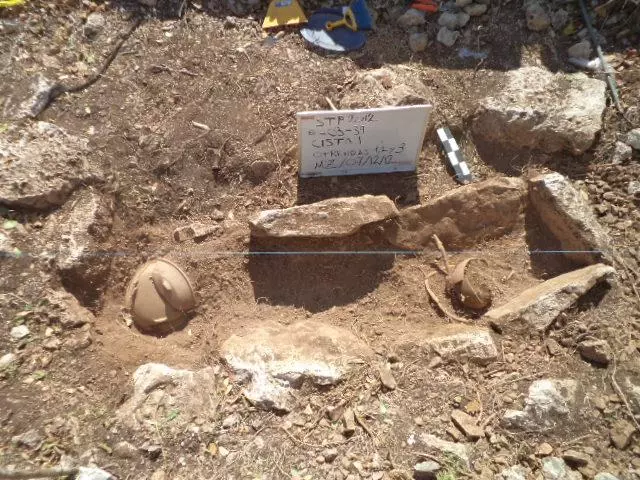New research, led by anthropologists from Washington State University (WSU), has deployed a novel analytical technique to reveal undiscovered compounds in an ancient Maya drug container previously thought to only be used for tobacco. As well as demonstrating the potential of this new analytical approach, the findings offer the first clear evidence that the ancient Maya mixed tobacco with other plant materials.
Mario Zimmermann, an anthropology postdoc at WSU, discovered the ceremonial vessel while working on a Maya archeological site in 2012. Similar containers have displayed painted hieroglyphs translating to "the home of tobacco" but exactly what these newly discovered vessels held was unknown.
"When you find something really interesting like an intact container it gives you a sense of joy," says Zimmermann. "Normally, you are lucky if you find a jade bead. There are literally tons of pottery sherds but complete vessels are scarce and offer a lot of interesting research potential."
Zimmermann and colleagues employed a new metabolomics-based approach recently developed to analyze a broad variety of plant compounds and metabolites present on ancient ceramics. Co-author on the new study David Gang explains prior techniques used to detect ancient residues were limited to a small array of specific biomarkers.

"The issue with this is that while the presence of a biomarker like nicotine shows tobacco was smoked, it doesn't tell you what else was consumed or stored in the artifact," says Gang. "Our approach not only tells you, yes, you found the plant you're interested in, but it also can tell you what else was being consumed."
The new analytical method was previously demonstrated on a 1,430-year-old pipe found in Washington State. As well as revealing indigenous North American tribes smoked a more diverse array of tobacco species than previously thought, the novel analytical approach pointed to a “new frontier in archaeo-chemistry.”
Focusing on the ancient Maya containers the research reveals two distinct types of tobacco were potentially stored in the small vessels – Nicotiana tabacum and N. rustica. Alongside metabolic traces of tobacco, the study found compounds linked to a type of Mexican marigold plant (Tagetes Lucida).

The study notes Colonial writers have reported indigenous cultures adding this plant to tobacco mixtures as an extra aromatic but this is the first clear archeological evidence of the practice.
“While it has been established that tobacco was commonly used throughout the Americas before and after contact, evidence of other plants used for medicinal or religious purposes has remained largely unexplored,” says Zimmermann. “The analysis methods developed in collaboration between the Department of Anthropology and the Institute of Biological Chemistry give us the ability to investigate drug use in the ancient world like never before.”
The research is a stark illustration of just how little we know about ancient psychoactive plant use. Shannon Tushingham, another co-author on the study, suggests this new analytical method will offer archeologists revelatory insights into ancient plant use. And the research team is already working to acquire more ancient containers to analyze for plant compounds.
“We are expanding frontiers in archaeological science so that we can better investigate the deep time relationships people have had with a wide range of psychoactive plants, which were (and continue to be) consumed by humans all over the world,” says Tushingham. “There are many ingenious ways in which people manage, use, manipulate and prepare native plants and plant mixtures, and archaeologists are only beginning to scratch the surface of how ancient these practices were.”
The new study was published in the journal Scientific Reports.
Source: WSU




